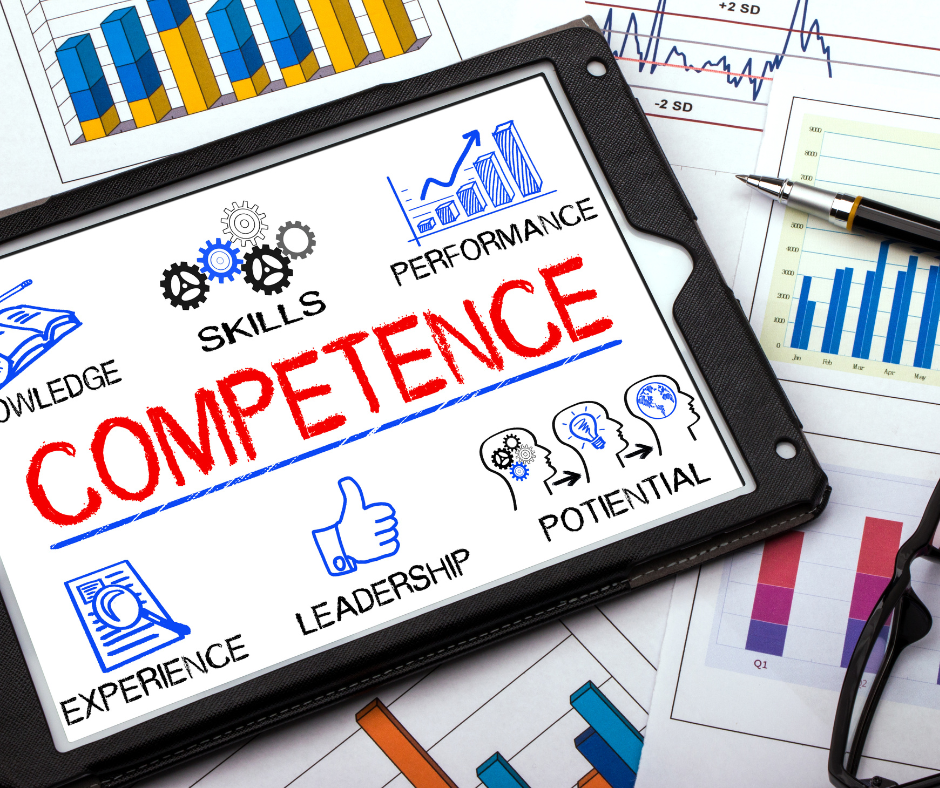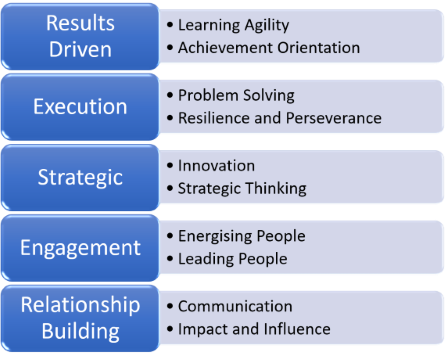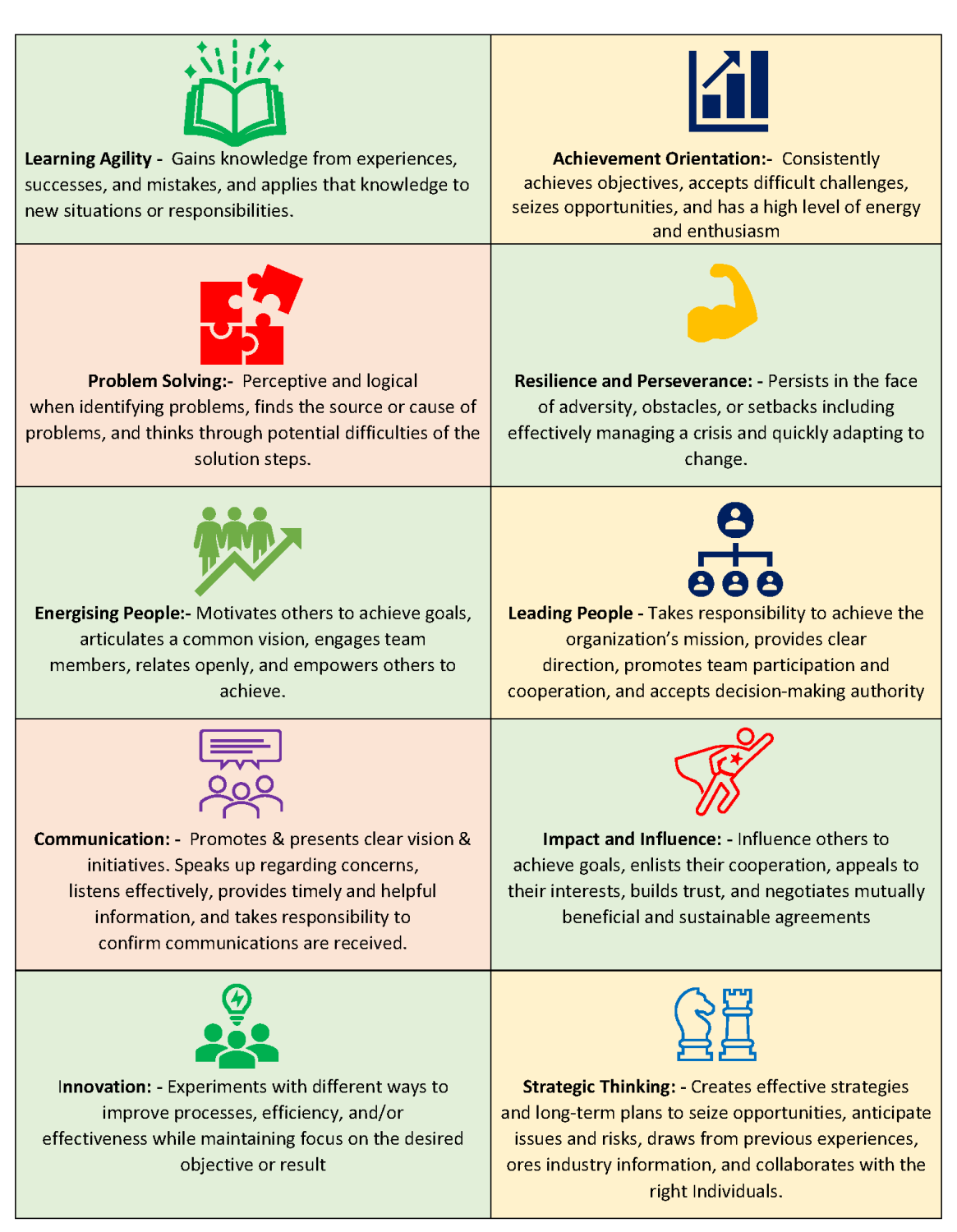
 What are the Leadership Competencies?
What are the Leadership Competencies?
Reflect on this for a moment:
- How do you currently measure your leader behaviours? – Do you even?
- How do you genuinely know if someone is performing well behaviourally?
- How much are you leaving to your gut feel?
- Are you putting off having difficult conversations about under behavioural performance because you believe your team member will challenge your view and you don’t know how to explain or measure performance in terms of attitude and behaviours?
- Does this leave you feeling like leading people is just hard work?
Good leadership is an integral part of every business and it is generally accepted that strong leaders share several important competencies. So whether you are a business owner or work in a larger organisation, developing great leadership attributes will not only support your own success but will provide you with transferable capabilities and help to grow your team, and that can only be good for your level of job satisfaction and business results.

During my time in corporate Learning and Development, competencies were used a lot.
They were a key tool in both assessing performance and potential and in the development of individuals either within a current or future role… and organisationally. We used competency frameworks to help drive higher levels of performance across the business. Competencies are a blend of knowledge, skills and behaviours laid out in a summary statement which is then broken down into further specific behaviours or traits that enable an individual and their line manager to understand their expected areas and levels of performance as set by the business they work in.
There are different types of competencies from Behavioural, Leadership, Emotional Intelligence, Remote work and Technical etc.
Broadly speaking, development generally focusses on 3 key areas. Knowledge, skills and behaviours or KSBs.
Knowledge – the know how, the information required.
Skills – the application of that knowledge.
Behaviours – the mindset and attitude, how you apply those skills and knowledge.
If you apply this concept to a tool – e.g.) hammer, hoover, drill, phone etc then
Knowledge is what you need to know – e.g.) information such as knowing what that tool is called, what it looks like, what the component parts are for, what it is used for and not used for, when you use it.
Skill is being trained in how to use it – e.g.) how to turn it on and off, how to hold it, what other tools or materials/ items to use it with, how to use it safely, how to use the knowledge appropriately.
Behaviours are the mindset and attitude and approach to the proper and consistent application of that tool which will include what we do, how we do it and the motivations for doing it or not.
So I might know what a hoover is and how it works, I might also have the skills required to use it effectively but my mindset may say “it’s not my job” or I might not be motivated to hoover up regularly or across the whole house for example.
A competency will blend the KSBs together and focus especially on the behavioural aspect. It’s the “how” people will carry out the knowledge and skills they have. In some instances these competencies are intuitive but importantly they can also be learnt and developed.
Why are they important?
Knowledge and skills are often viewed as easier to measure than behaviours because they are more tangible. (I can usually prove through some form of checking if i can or can’t do something or I do or don’t know something). Unless we have clear descriptions of what behaviours look like we often shy from measuring them because they are more intangible, more subjective and open to misinterpretation. My view of good communication may well be different to yours and so I can always disagree or deny my level of performance if it’s not clearly laid out and shared.
You need to act in a way that is appropriate for your business or profession. Competencies help to set a culture and form the basis of setting expectations, performance management, recruitment and more providing a shared understanding across a business of what performance looks like in behavioural terms. They also provide a map of the behaviours and actions that will be valued, recognised and possibly rewarded within a business. A good competency framework may well have several layers of performance woven into them which may be based around seniority and job levels in a role and specify for example what makes for acceptable, good or excellent performance.
Behaviours and competencies are very transferable. The competencies of team work, communication, resilience, strategic thinking and so on may be more similar across industries or professions than knowledge and skills.
Developing competencies is also useful for transferring skills and behaviours within a business as well as for engaging and retaining individuals and supporting growth and career paths. All of which are crucial to business growth and important given the current job market.
What are Paradoxical Leadership Competencies?
The characteristics leaders need to demonstrate to be successful are often paradoxical in their nature. That is, two seemingly opposite traits that actually need to come together in a synergistic and complimentary way rather than using one or the other. For example, the ability to communicate in both a frank and diplomatic way leads to more effective overall communication or to be certain about your own opinion whilst also be able to seek the counsel of others enables a balance of opinions to be had and better decisions to be made.
Assessing your leadership skills and attributes can help you evaluate and improve your own abilities so that you can inspire your team, help them to develop and grow and successfully achieve your business goals. And, let’s face it, most employees also want knowledgeable and capable leaders that they can trust.
The competency descriptions

The Harrison Competency Model, shown above, measures fully researched leadership competencies for either emerging (new to leadership ) or senior leaders.
They are fully customisable, so if you already have your own leadership competencies you can map those into your Harrison system and measure those as the questionnaire is completed.
Using either the individual’s report or the team analytics that can be collated at the same time, you can
- identify strong individual characteristics and determine if they are “derailers”
- identify how the individual or team reacts under work related pressure or stress
- have the critical insights necessary to turn “derailers” into strengths
- build organisational capacity by highlighting gaps and strengths by leadership population and addressing though your coaching and leadership programmes
- target your training and development budgets more efficiently using scientific data
So consider again
How do you currently measure your leader behaviours? – Do you even?
How do you genuinely know if someone is performing well behaviourally?
How much are you leaving to your gut feel or are you putting off having difficult conversations because you believe your team member will challenge your view and you don’t know how to explain performance in terms of attitude and behaviours?
Does this leave you feeling like leading people is just hard work?
Would you benefit from a chat with me?
Book a Strategy call now – Book a virtual coffee to explore how developing leadership competencies can really benefit your business and help you achieve your personal or business growth.
